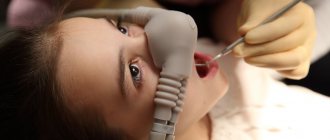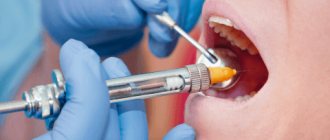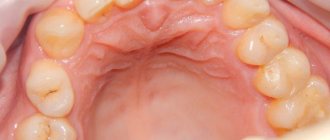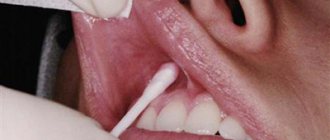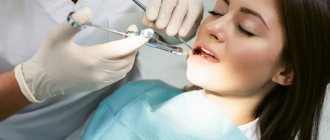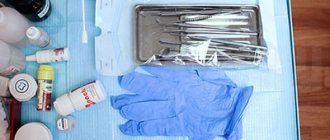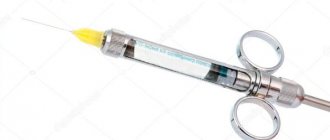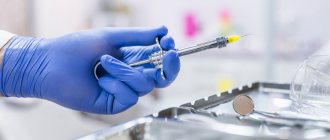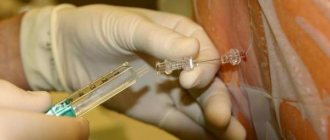Is going to the dentist really stressful for you? Fear and anxiety, muscle and psycho-emotional tension interfere not only with the patient, but also with the doctor. Premedication will help cope with this.
Premedication, or simply put, taking sedative medications, is carried out before pain relief and enhances the anesthetic effect. It is simply irreplaceable for those who are terrified of dental treatment. Especially for the youngest patients.
Why is premedication needed?
The purpose of premedication is to prevent possible reactions and complications during or after dental procedures, including achieving:
- suppression of fear;
- patient relaxation;
- elimination of the gag reflex;
- suppression of increased salivation;
- reduction of pain sensitivity;
- prevention of allergic reactions.
Types of general anesthesia
General anesthesia includes:
- inhalation anesthetics and gases, such as xenon, fluorotane, nitrous oxide, etc.;
- non-inhalation agents for intramuscular and intravenous anesthesia, for example ketamine, ketalar, propofol, etc.
Inhalation anesthesia has fewer complications and is more manageable, but requires special equipment. Non-inhalation – does not cause emetic and hypotensive reactions. When treating pulpitis of primary teeth or periodontitis, dentists independently decide on the choice of anesthesia method, based on the characteristics of the patient.
Types of nonspecific premedication
Sedative
Has a sedative effect. Reduces mental and emotional stress, eliminates fear and anxiety, and also enhances the effect of pain relief.
Half an hour to an hour before treatment, the patient is recommended to take tranquilizers or homeopathic sedatives of plant origin:
- The first include afobazole, diazepam, phenazepam, valocordin.
- The second includes tinctures of valerian, motherwort and peony, novopassit tenoten, corvalol.
Under their influence, a person relaxes, while remaining fully conscious. The effect lasts for several hours. If you have a panicky fear of dentists, it is better to take medications not only before visiting the doctor, but also on the eve of the scheduled visit.
Valerian and peony
Analgesic
Completely suppresses or significantly reduces the pain threshold, enhances the result of local anesthesia. The analgesic effect is achieved by taking painkillers - narcotic or non-narcotic. Half an hour to an hour before dental intervention, the following are prescribed: ibuprofen, ketrodol, xefocam-rapid, nubain, tempalgin, tramadol, tramal, fortal.
On average, the effect of analgesics lasts four hours.
Antiallergic
To prevent allergic reactions to local anesthetics and pseudo-allergic manifestations in response to a stressful situation for the body, patients are prescribed antihistamines.
Most often it is diphenhydramine, suprastin, claritin, tavegil. Other drugs are also used - Zyrtec, Kestin, Parlazan, Telfast.
Diphenhydramine, claritin, tavegil and suprastin also have a sedative and anti-inflammatory effect.
Cholinergic
Excessive salivation and the gag reflex are suppressed with a number of medications:
- atropine;
- haloperidol;
- glycopyrronium;
- droperidol.
Clozapine, metacin, Robinul and triftazine are used for the same purposes. Medicines are taken the day before dental procedures and/or half an hour before them.
Combined
In other words – combined. This type is most often used to eliminate several problems at once. Which types of premedication will be combined depends on the results of the anamnesis.
Local anesthesia
For most dental procedures, the use of local anesthetics is sufficient. Children usually tolerate freezing well, and modern drugs are safe and have minimal contraindications. Sensitivity of soft tissues is easily relieved with lidocaine, dicaine, benzocaine, bumecaine. The drugs are produced in different forms: water-based, oil-based solutions, in the form of gels, sprays, ointments.
Types of local anesthesia
Depending on the procedure, age, psychological mood of the child, pain relief is carried out using the application or injection method, as well as a combination of both.
Applications. Soft tissues in the treatment area are often treated with solutions, gels, and sprays based on lidocaine. The agents penetrate well into the mucous membranes and dull sensitivity. For some procedures, for example, removal of a loose baby tooth, an application is sufficient; in more complex cases, an additional injection is given.
Injections. The drugs are administered using a syringe. From the age of four you can use products with articaine, which are several times more powerful than novocaine anesthetics and are also safer. In pediatric dentistry, conduction (acts on the branch of the trigeminal nerve) or infiltration (reaches the endings of the dental nerves) anesthesia is usually performed. The second method is acceptable from the age of six.
Injection instruments
Classic syringes are gradually leaving children's clinics. Modern instruments make it possible to give injections less painfully and without psychological discomfort.
Through a needle-free injector, the drug enters the soft tissues under high pressure. Since there is no needle, the child does not experience strong fear.
In this case, the analgesic effect occurs faster due to the uniform distribution of the product.
The computer syringe also does not look like a regular one, so the injection is more comfortable. The dosage is controlled electronically, which allows saving on anesthetic, and the feeling of numbness after the injection is less pronounced.
A thinner needle is placed on the carpule syringe, which minimizes discomfort. The solution is contained in a sterile capsule to ensure precise dosing.
Premedication in pediatric dentistry
A different set of medications is recommended for children than for adults. Premedication regimens depend mainly on the age of the child.
Children from 0 to 3 years old are not given premedication.
- Children 3-6 years of age are prescribed phenobarbital and bromide-based sedatives the night before a visit to the dentist. Half an hour before the procedures, the same drugs and 10 drops of valerian tincture are taken again.
- 6-10 year old children are prescribed barbamyl, bromides and pipolfen before bedtime. 30 minutes before dental surgery, the medications are taken again along with vitamin B1.
- Adolescents under 15 years of age take diphenhydramine, phenobarbital, barbamyl and pipolfen before going to the dentist. Before a dental procedure, promedol, atropine, and aminazine are added to these medications.
Drugs that depress mental processes and the functions of the respiratory, circulatory and excretory systems are contraindicated for children.
Indications
In addition to the problems that premedication solves, indications for its implementation can be identified. This procedure is prescribed by the attending physician, based on many factors.
.
This decision is also influenced by the appearance of symptoms that may in no way be related to the nature and complexity of the future intervention.
- Premedication is mandatory before complex or lengthy operations (for example, bone grafting, complex surgery), which involve the use of general anesthesia.
- Carrying out implantation, that is, implanting metal rods into the bone to replace the roots of missing teeth.
- Fear, severe anxiety, tension in the patient.
- Changes in some physical indicators, vegetative changes. This could be, for example, an acceleration of heart rate, increased blood pressure, etc.
- Anxiety in special patients with respiratory or cardiovascular disease, as it can cause serious complications.
- Fainting during the process of collecting information and taking an anamnesis.
Contraindications
- Liver diseases, for example, cirrhosis, Botkin;
- kidney diseases;
- myasthenia gravis – a disease that causes pathologically rapid fatigue of striated muscles;
- pregnancy and lactation;
- age up to three years.
There may be other individual contraindications, so you should act only under the guidance of a doctor.
Complications
If the procedure was carried out according to indications and in compliance with the dosage of medications, there should be no complications. However, some drugs have side effects and can cause a number of negative symptoms:
- hallucinations;
- dry mouth;
- rash;
- increased drowsiness.
Side effects go away on their own when the drug wears off. On average - four hours after administration.
Immediately after completing dental procedures, the doctor must make sure that the patient is in adequate condition, reacts normally to external stimuli, and feels well. If this is not the case, the dentist contacts the patient’s relatives and waits for their arrival.
Reviews
Premedication is almost always well tolerated by patients
. After all, the drugs themselves, as well as the method of their use, are selected by experienced doctors, taking into account the patient’s condition and indicators.
Those who have undergone it can share their impressions about this procedure by leaving a comment on this article.
If you find an error, please select a piece of text and press Ctrl+Enter.
Tags adults for children premedication
Did you like the article? stay tuned
Previous article
Teeth whitening strips Crest 3D White Whitestrips: varieties, prices, reviews
Next article
Description of treatment for mandibular fracture
FAQ
Does premedication hurt?
Not necessary. Premedications can be taken orally, so there will be no pain. Injections, however, give better results.
Does it influence behavior?
Sometimes patients become more talkative and unreasonably cheerful. But such manifestations are extremely rare. If adverse reactions occur in the form of hallucinations and drowsiness, it is prohibited to drive. Until these symptoms go away, it is not recommended to engage in activities that require increased concentration. In other cases, after premedication, you can return to a normal lifestyle and do your usual activities.
